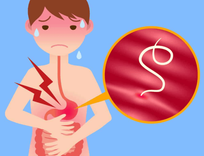The article was professionally consulted by Master, Doctor Phan Ngoc Hai - Pediatrician - Neonatologist - Department of Pediatrics - Neonatology - Vinmec Da Nang International General Hospital and Resident Doctors of Pediatrics - Neonatology - Department of Pediatrics - Neonatology - Vinmec Hai Phong International General Hospital.
The transition from summer to autumn is when epidemics break out and the subjects of the disease are often children. The high temperature during the day leads to an increase in the number of sick children and hospitalizations, one of the most common diseases is viral fever.
1. Signs of viral fever in children
Children with fever in the afternoon and at night are one of the typical signs of viral fever. Children have had a high fever continuously for 2-3 days, some children only have a fever at night or in the afternoon, accompanied by respiratory symptoms such as a lot of runny nose, irritation of the throat area, causing redness, making the child uncomfortable, fussy, feeling like the child has difficulty swallowing, vomiting.
High fever: This is a very common symptom in cases of children with viral fever, body temperature often increases from 38 - 39 degrees Celsius, even up to 41 degrees Celsius. When the fever goes down, the child is conscious and plays normally.
Body pain: Young children often complain of pain all over the body, crying, and feel uncomfortable when being touched. Older children suffer from muscle pain.
Headache: Some cases of viral fever cause children to experience headaches but they remain generally conscious.
Respiratory tract inflammation syndrome: Symptoms such as coughing, runny nose, sneezing, and sore throat.
Digestive disorders: This symptom often appears early if the cause of fever is a virus in the digestive tract, it can also occur a few days later after the fever with the characteristic of loose stools, but without blood and mucus (no digestive bleeding).
Lymphadenitis: Swollen, painful, can be seen or felt by hand, especially the lymph nodes in the head, face, neck.
Skin rash: Usually appears 2 - 3 days after the onset of fever, when the rash appears, the fever will subside.
Conjunctivitis: Viral fever leads to red conjunctivitis, eye discharge, and lots of tears.
Vomiting: Children vomit many times, but usually after meals.
Trắc nghiệm: Sự phát triển tinh thần, vận động của bé thế nào là đúng chuẩn?
Khi nào bé biết nói, biết hóng chuyện hay biết cầm cốc là "đúng chuẩn"? Điểm xem bạn biết được bao nhiêu mốc phát triển tinh thần, vận động "đúng chuẩn" của bé nhé!The following content is prepared under supervision of Thạc sĩ, Bác sĩ y khoa, Ma Văn Thấm , Nhi , Phòng khám Đa khoa Vinmec Dương Đông(Phú Quốc)
2. What to do when your child has a viral fever?
For viral fever, antibiotics will not be effective in treating. The child has had a high fever for many days, so his/her body is tired from fighting against the disease. The immunity is reduced due to the effects of the virus. Also, the action of taking antibiotics may weaken the defense ability even more.
There was a case of a 3-year-old child having a fever in the afternoon and night but the parents did not take him to see a doctor and get a diagnosis but gave him antibiotics, the result was that the child suffered from unwanted effects of antibiotics, became resistant to antibiotics, making it difficult to treat future diseases. Not only did the disease persist, but the child's health continued to deteriorate, causing the fever to last longer and become more severe.
Therefore, in the case of a 3-year-old child with a fever in the afternoon and night as mentioned above, parents should not arbitrarily use antibiotics for the child but should see a doctor the next morning. In this situation, to overcome the symptoms for the child, parents need to note that it is important to give the child fever-reducing medicine and supplement water (fruit juice, oral rehydration solution). However, in many cases, the child has only used fever-reducing medicine for 2-3 hours but the fever returns, do not administer more fever-reducing medicine; instead, apply a warm towel to areas of the body such as the groin, armpits, forehead, etc instead. If the child has a fever accompanied by a runny nose, it is necessary to clear the nose with physiological saline daily.

3. When should a child with a fever be hospitalized?
Parents should take their child to the hospital for treatment when they notice the following symptoms in their child:
High fever above 38.5 degrees Celsius, especially when the fever is above 39 degrees Celsius and fever-reducing medicine is not effective in reducing the fever.
Signs of drowsiness, lethargy, excessive sleepiness, seizures, continuous and increasing headaches, nausea, repeated dry heaving, fever lasting more than 5 days.
To prevent illness in children during the changing seasons, parents need to proactively protect and improve their children's resistance, ensure that children drink enough water every day and wear appropriate clothing according to the weather. Because late nights and early mornings are chilly while noon is hot and sunny, it is necessary to adjust children's clothing regularly during the day to both prevent the risk of catching a cold and the possibility of sweating, which is also the cause of common cold in children.
To arrange an appointment, please call HOTLINE or make your reservation directly HERE. You may also download the MyVinmec app to schedule appointments faster and manage your reservations more conveniently.

















